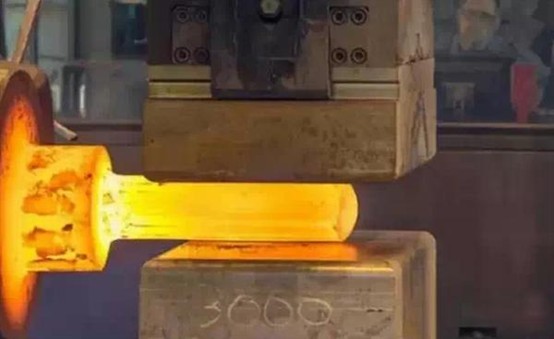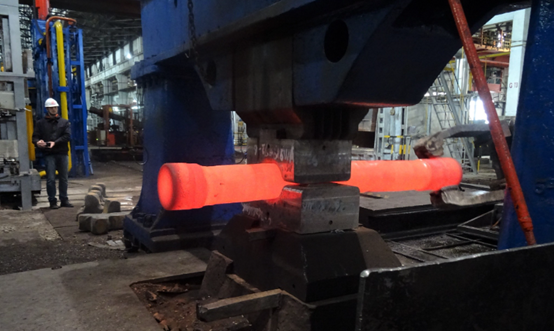Open die forging and closed die forging are two common methods in forging processes, each with distinct differences in terms of operational procedure, application scope, and production efficiency. This article will compare the characteristics of both methods, analyzing their advantages and disadvantages to provide a basis for selecting the appropriate forging technique.
1. Open Die Forging
Open die forging refers to a process in which force is applied directly to a workpiece using simple, general-purpose tools or between the upper and lower anvils of forging equipment to deform the material and achieve the desired shape and internal quality of the forged piece. This method is typically used for small-batch production, and the equipment commonly includes forging hammers and hydraulic presses. The basic processes of open die forging include upsetting, drawing out, punching, cutting, and bending, and it usually involves hot forging techniques.
Advantages:
- High flexibility: It is suitable for producing forgings of various shapes and weight ranges, from small parts weighing less than 100 kg to heavy parts exceeding 300 tons.
- Low equipment requirements: Simple, general-purpose tools are used, and the equipment tonnage requirements are relatively low. It has a short production cycle, making it suitable for urgent or small-scale production.
Disadvantages:
- Low efficiency: Compared to closed die forging, the production efficiency is much lower, making it difficult to meet the needs of large-scale production.
- Limited shape and precision: The forged parts are usually simple in shape, with low dimensional accuracy and poor surface quality.
- High labor intensity: Skilled workers are required, and it is challenging to achieve mechanization and automation in the process.
2. Closed Die Forging
Closed die forging is a process in which the workpiece is shaped by a die on specialized forging equipment, making it more suitable for mass production. The equipment used includes forging hammers, crank presses, and other specialized machines. The forging process includes pre-forging and finish forging, and the dies are carefully designed to produce complex-shaped forgings with high efficiency.
Advantages:
- High efficiency: Since metal deformation occurs within the die cavity, the desired shape can be obtained quickly, leading to faster production rates.
- Complex shapes: Closed die forging can produce complex-shaped forgings with high dimensional accuracy and reasonable metal flow patterns, improving the service life of parts.
- Material savings: Forgings produced by this method have less machining allowance, better surface quality, and reduce the amount of subsequent cutting work, leading to material savings.
Disadvantages:
- High equipment costs: The manufacturing cycle of forging dies is long, and the cost is high. Additionally, the investment in closed die forging equipment is larger than in open die forging.
- Weight limitations: Due to the capacity limitations of most forging equipment, closed die forgings are typically limited to weights below 70 kg.
3. Conclusion
In summary, open die forging is suitable for small-batch, flexible production scenarios and is ideal for manufacturing large or simple-shaped forgings. On the other hand, closed die forging is more appropriate for large-scale production of complex-shaped forgings. It offers higher efficiency and material savings. Choosing the right forging method based on the shape, precision requirements, and production scale of the forgings can significantly improve production efficiency and reduce costs.
Post time: Oct-12-2024






